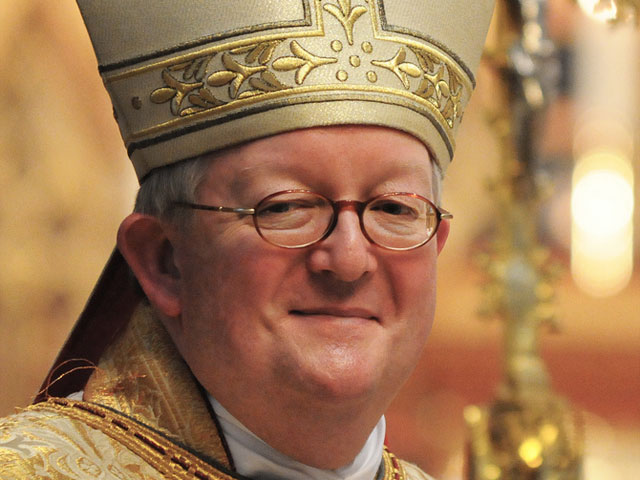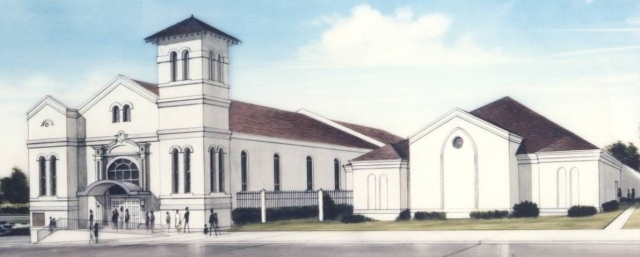What we have here is a very solid New York Times story about a somewhat controversial issue in the life of the Roman Catholic Church.
Let me repeat that, for regular GetReligion readers who may have fainted.
What we have here, under the headline “Bishops Follow Pope’s Example: Opulence Is Out,” is a very solid story about the trend among Catholic prelates to down-size their lives a bit, when it comes to the cost of their housing. In fact, I have only one minor criticism and that focuses on an interesting, but perhaps not essential, angle that this fine story could have mentioned.
But let’s focus first on the good news. The story opens with the decision by Archbishop Wilton D. Gregory of Atlanta to sell his new $2.2 million, 6,000-square-foot mansion in the ultra-high-rent Buckhead neighborhood which, the Times properly notes, was being built on donated land with funds donated for this purpose.
Then there is this obvious news hook in the summary paragraphs:
… (As) Pope Francis seeks “a church which is poor and for the poor,” expectations for Catholic leaders are changing rapidly. So on Monday night, Archbishop Wilton D. Gregory apologized, saying that laypeople had told him they were unhappy with his new house, and promising to seek guidance from priests and laypeople and to follow their advice about whether to sell it.
“What we didn’t stop to consider, and that oversight rests with me and me alone, was that the world and the church have changed,” he wrote in the archdiocesan newspaper, The Georgia Bulletin. He added, “The example of the Holy Father, and the way people of every sector of our society have responded to his message of gentle joy and compassion without pretense, has set the bar for every Catholic and even for many who don’t share our communion.”
The unhappy reaction of local Catholics to the archbishop’s new house in Atlanta is the latest in a series of lay uprisings since the new pope altered the landscape by choosing to live in a modest Vatican residence rather than the opulent apostolic palace, to travel in a Ford Focus and to denounce overspending by church leaders.
Now, the Pope Francis superstar factor cannot be denied here. It’s there and it’s very real. However, I think it’s crucial to note that other factors are playing a role in this trend.
For starters, some bishops have chosen to live in community with other priests and religious, rather than living alone. A few have moved out of fancy solo digs in order to seek new, perhaps even larger, houses in order to share them with others. In a few cases, a larger house might be sign of modesty, not opulence. Journalists jumping on this trendy story should inquire about that.
Also, the bad economy is causing some Catholic leaders in rust-state zip codes to sell off some big properties. Yes, and some bishops have been forced to sell valuable properties after taking financial hits in settlements after clergy sexual abuse cases.
Nevertheless, the Times piece follows the money on an impressive (bling bishop alert) list of recent cases. I would be interested in seeing comments from Catholic GetReligion readers who know more about the facts (URLs please) behind some of these circumstances.
In Newark, laypeople have expressed unhappiness about a planned $500,000 expansion, with three fireplaces and an indoor pool, of a weekend home used by Archbishop John J. Myers. In the Camden, N.J., diocese,questions have been raised about Bishop Dennis J. Sullivan’s purchase of a 7,000-square-foot, $500,000 house. In West Virginia, local Catholics cited Francis’ humble lifestyle in questioning what they viewed as excessive spending by the Wheeling-Charleston diocese. And, most significantly, last week the pope accepted the resignation of a German bishop who had spent $43 million renovating his house and other church buildings. …
A number of American bishops have sent similar signals over the last decade, even before Francis became pope last year. In Boston, Cardinal Sean P. O’Malley, who is now the pope’s closest American adviser, began his tenure by selling the Italianate palazzo that had housed his predecessors and moving into a shabby cathedral rectory. In Philadelphia, Archbishop Charles J. Chaput sold the mansion occupied by his predecessors and moved into an apartment on the grounds of a seminary. In Pittsburgh, Bishop David A. Zubik lasted two weeks in that diocese’s mansion before putting it up for sale and moving into a seminary apartment.
All and all, this appears to be a story with legs. Bravo.
I was especially taken with the sobering quality of this quote near the end from Archbishop Gregory:
“While my advisers and I were able to justify this project fiscally, logistically and practically, I personally failed to project the cost in terms of my own integrity and pastoral credibility with the people of God of north and central Georgia,” he wrote. “I failed to consider the impact on the families throughout the archdiocese who, though struggling to pay their mortgages, utilities, tuition and other bills, faithfully respond year after year to my pleas to assist with funding our ministries and services.”
Coming soon to a newspaper near you?











